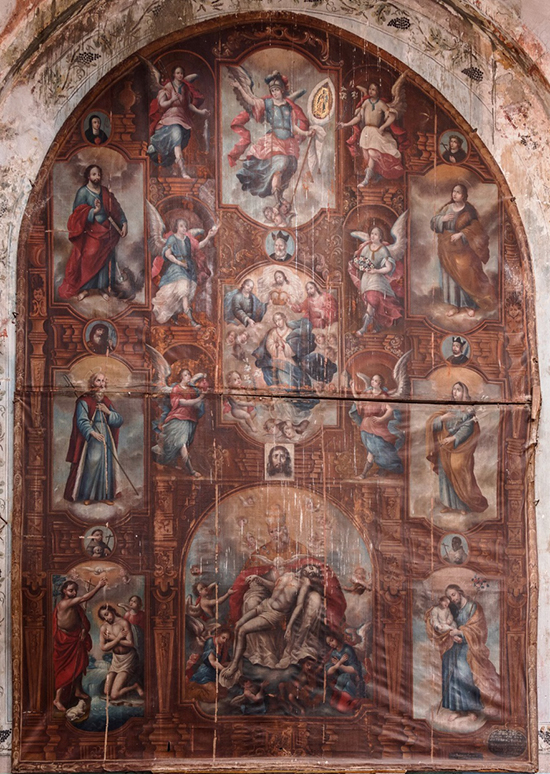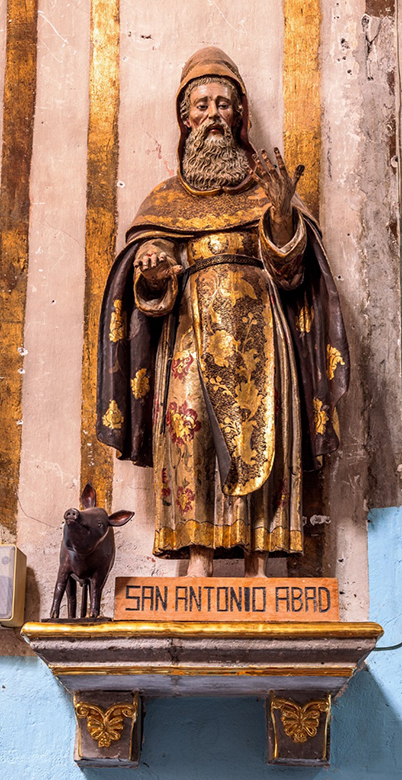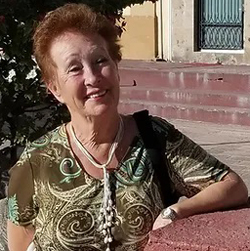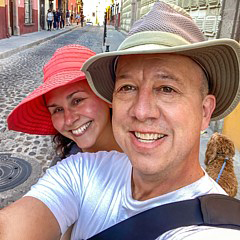by Natalie Taylor with photos by Jack Paulus
The church of San Rafael, also called la Santa Escuela (the Holy School), is the oldest religious building within the historical center of San Miguel de Allende. In 1542 Juan Fray de San Miguel arrived in the region and founded a mission. It was some five kilometers from the city's current center, near the Laja River, in what is called San Miguel Viejo. The first community consisted of a small chapel, and a school, and was surrounded by dwellings the natives had built. A few years later, following attacks by warring tribes, the mission was moved to the area of El Chorro. Then finally, in 1551, when the viceroy designated the community as a town of Spaniards, and provided military support, it was moved to the present location. The church of San Rafael was built in 1564 and was named Templo de la fundacion—Foundation Church. Until the current Parroquia was constructed in the 17th century, San Rafael functioned as the parish church, and came to be known as la vieja parroquia—the old parish.

For someone who loves history, it is a pleasure to find and visit any ancient building—particularly one that holds precious art objects. I had the honor to walk about inside the church of San Rafael with photographer Jack Paulus. With the permission of Father Armando Flores, the new parish priest, we were allowed to see and photograph not only the objects within the church, but also hidden treasures behind locked doors.
In the photo above there are several works of art worthy of mention. The centrally located Jesus, titled Nuestro Padre Jesus—Our Father Jesus, is a wooden sculpture made approximately in 1770. According to city chronicler Jose Cornelio Lopez Espinosa, it most likely came from the religious art workshops of Michoacan. To the right is a sculpture of the Virgen de los Dolores—the Virgin of Sorrows, also of great antiquity. On the wall to the right, there is a well-executed painting of the Ascencion. Unfortunately, as with many of the works of art found here, there is neither date nor artist's name.

So many objects of art, sculptures, and paintings are within San Rafael Church, it is impossible to talk about them all. One of the most important ones is a giant canvas in the northern transept, composed of many panels depicting various phases in the life of Jesus. At the very top, St Michael the Archangel—patron of the city—holds a banner of the Virgin of Guadalupe. The painting shows its age, and it has a faded signature in the lower right hand corner. It is of one of the most recognized novo-Hispanic painters: Juan Baltazar Gomez, dated 1780.


The figure of San Antonio Abad—Saint Anthony the Abbot, on the left near the entryway, is significant for two reasons. It is one of the oldest sculptures in the city, and a fine work of art with a specific, decorative technique called estofado. Gesso is applied to a wooden sculpture, then filled with layers of gold or silver leaf, followed by an overlay of paint or glaze. The idea is to emulate the look of gold brocade, and it became quite popular in Spain during the baroque period.

This particular Saint Anthony—different from Saint Anthony of Padua, reputedly lived in the II Century in Egypt. He was an ascetic who, like others before and after him, went into the wilderness to escape temptation. He is often depicted—as he is in the church of San Rafael, with a small pig because he related to animals, and supposedly had a pig as a companion.
Along the wall on the right there is a representation of the judgment of Jesus. A painted panel serves as backdrop, and the sculpted figure of a wounded Jesus, praetorian guards, and Pontius Pilate create the powerful mise-en-scene. The figure of Jesus was done by the same sculptor who created the Señor de la Columna statue in Atotonilco, carried annually in procession to San Miguel for the past 200 years.
But the piece de resistance appeared in the storage room, once it was unlocked. In 2018 I had read Cornelio Lopez Espinosa's foremost book on the history of San Miguel. In it, he mentions something quite rare: a painting on canvas done by none other than Antonio Martinez de Pocasangre—the artist who painted the famous church murals in Atotonilco. The work titled El Infierno—Hell—supposedly hung somewhere in the church of San Rafael. Over the years, my inspection of all the walls in the church led to nothing. All my inquiries about the painting's location elicited a shrug, and a "No tengo menor idea"—I have no idea. One of the custodians told me it had been removed and was being stored somewhere; perhaps even lost. So finally, after five years of searching, here I was looking about in the back storage room, when suddenly I saw it. An unmistakable depiction of hell! Being somewhat familiar with the work of Pocasangre, his style seemed evident in the faces of the individuals, and their expressions. It was truly a special moment.

Jack, just as excited to be able to photograph this treasure, set up his camera and shot away. Many more paintings hang in the storage room, most of them anonymous, and some badly deteriorated—canvases with scratches, holes, and colors darkened by the passage of time. At least now they will remain forever in the photos taken that day.
Part II
**************

Natalie Taylor, born to Ukrainian parents, grew up in Argentina, where her family fled after WWII. They eventually moved to the U.S., and she spent most of her adult life there. She has a journalism degree, and an MFA in creative writing from Vermont College, Montpelier, VT. Her short stories, and poetry have been published in numerous literary magazines, and she has received several literary awards. She and her husband currently reside in San Miguel, where she has a weekly column in Atención, for which she also does translations. She has two books about San Miguel, available on Amazon or at the Tesoros Book Store: "Of All the Towns in All the World," and "SMA Self-Guided Historical Walking Tour." Her memoir, "The Tango House," will be coming out soon.
www.natalietaylor.org
**************

Jack Paulus has lived in SMA for a year and a half but this was his first Semana Santa. Before moving here he spent decades in the movie industry (Pixar). There expressing creativity collectively involved hundreds of other people. He observes, "I have been taking photos since the age of 12 and now I enjoy capturing life around me in images in a solo capacity."
www.jackpaulus.com
**************
*****
Please contribute to Lokkal,
SMA's online collective:
 ***
***
Discover Lokkal:
Watch the two-minute video below.
Then, just below that, scroll down SMA's Community Wall.
Mission

Visit SMA's Social Network
